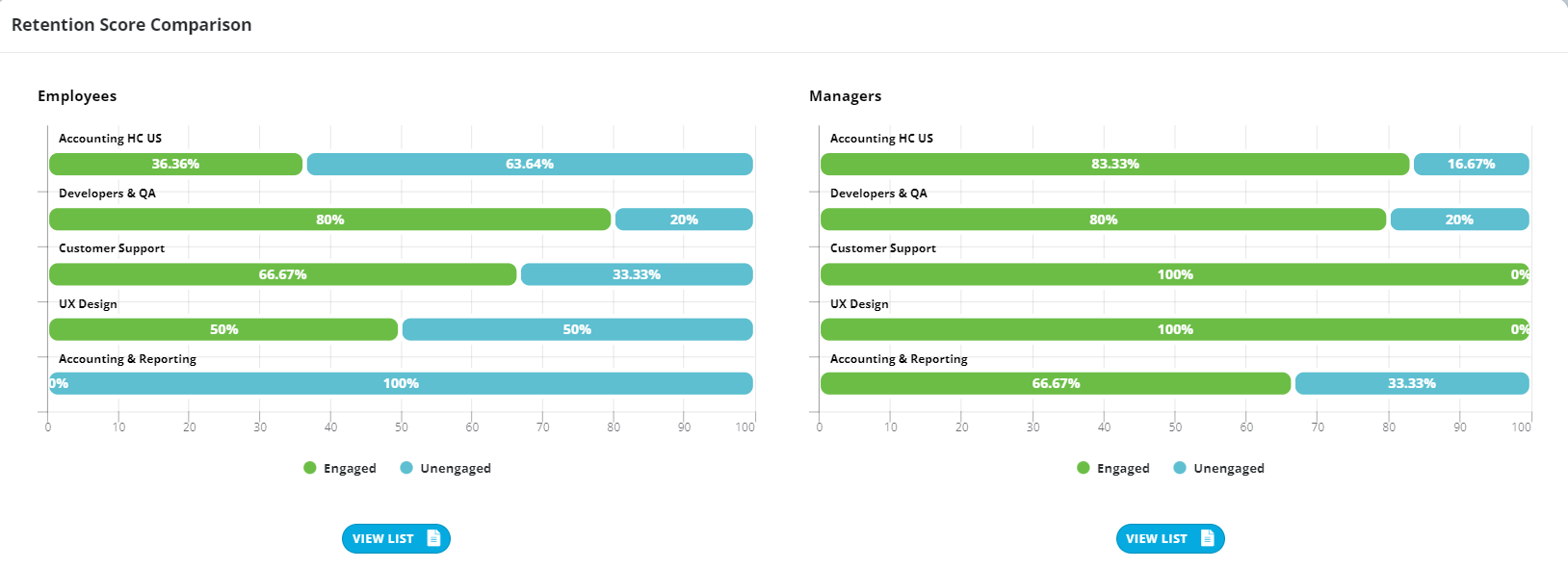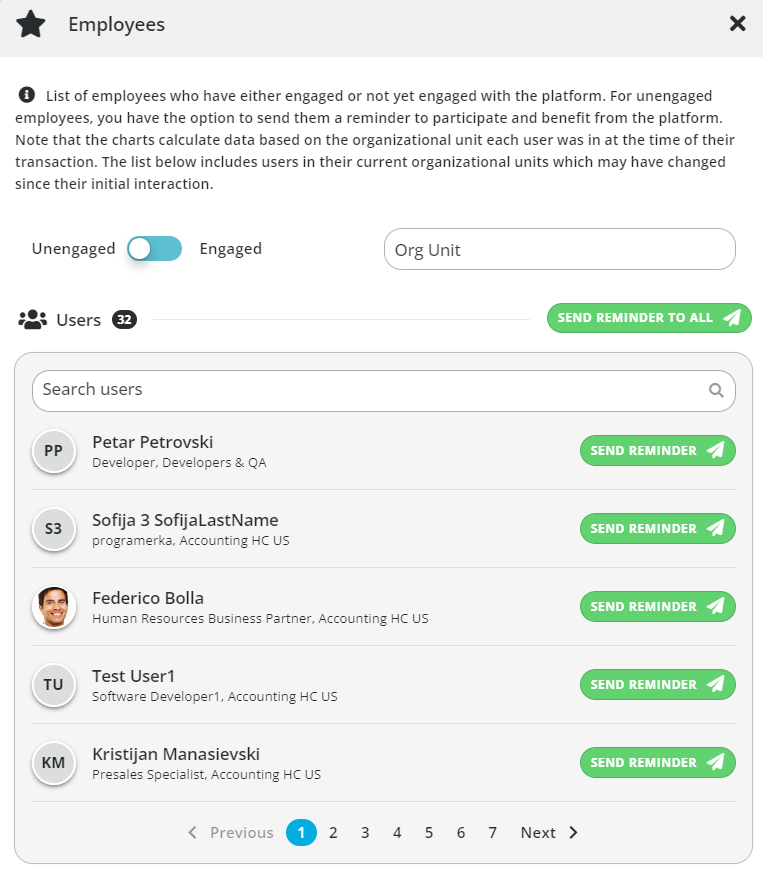Employee Retention reports will provide you with comprehensive insights into the factors impacting employee retention within your organization.
Employee retention is a critical aspect of workforce management, and analyzing these reports can provide valuable insights into the effectiveness of an organization's strategies. This article focuses on key elements of Employee Retention reports that address employee retention, including filtering options, infographics for comparing retention scores, average retention scores, and turnover by years of service. These insights help organizations assess and improve their employee retention efforts.
Filtering Options
At the top of the page, there are filter options to adjust the data. These filters include country, organizational unit, division, and a date range (from and to). These options will allow you to narrow down the data and focus on specific segments and timeframes.

Image: Employee Retention- Filters
Infographic: Retention Score Comparison
The first infographic focuses on comparing retention scores, with one infographic dedicated to employees and the other to managers. Each infographic includes two categories: Engaged and Unengaged employees. The categorization is further segmented by organizations within the company. By hovering over each organization, you will be displayed the number of engaged and unengaged employees.

Image: Employee Retention- Retention Score Comparison
Employees:
- Engaged Employees: This category represents employees who demonstrate high levels of engagement and are more likely to stay with the organization.
- Unengaged Employees: This category represents employees who exhibit low levels of engagement and may be at a higher risk of leaving the organization.
Managers:
- Engaged Managers: This category represents managers who display high levels of engagement and contribute to employee retention.
- Unengaged Managers: This category represents managers who exhibit low levels of engagement and may have a negative impact on employee retention.
By selecting the View List option on either the Employees or Managers infographic, you will be opened with a pop-up window displaying all of the employees who are engaged or not yet engaged. By clicking on Send Reminder, you will notify the Employee/Manager to participate and engage in the platform.

Image: Employee Retention- List of Employees
Infographic: Average Retention Score
The next infographic provides an average retention score over a selected period of time. This score represents the percentage of employees who remained with the company during the chosen period. Additionally, the data compares these figures with the corresponding values from the previous period. The infographic also highlights the number of engaged and unengaged employees during the selected period.

Image: Employee Retention- Average Retention Score
Infographic: Turnover by Years of Service
The final infographic focuses on turnover by years of service. It displays the distribution of employees across different categories of tenure, segmented into two bars: 1-5 Years of Service and 5-10 Years of Service. Each bar is further divided into engaged and unengaged employees, highlighting the level of employee engagement within each tenure category. Engaged employees are defined as individuals who have had at least one interaction per month during the selected period.

Image: Employee Retention- Turnover by Years of Service
Employee Retention on employee retention play a crucial role in helping organizations assess the effectiveness of their employee retention strategies. By utilizing filtering options, organizations can analyze retention data specific to their needs. The infographics provided in these reports, including retention score comparisons, average retention scores, and turnover by years of service, offer visual representations of essential retention metrics, enabling organizations to identify areas of improvement and make informed decisions. With a better understanding of employee retention dynamics, organizations can implement targeted strategies to improve employee engagement, reduce turnover, and enhance overall organizational success.
If this article left your questions unanswered, please submit a Support Form, and we can clarify this topic.
.png?height=120&name=MicrosoftTeams-image%20(6).png)